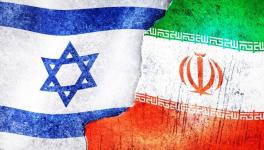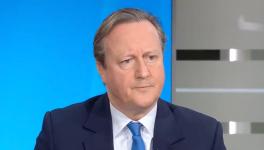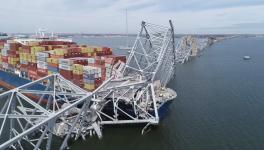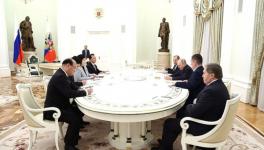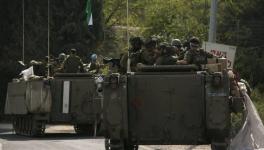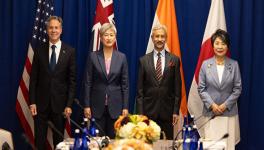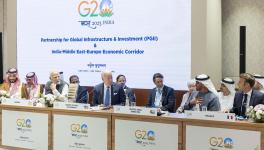North Korea to Begin Dismantling Its Only Known Nuclear Test-Site
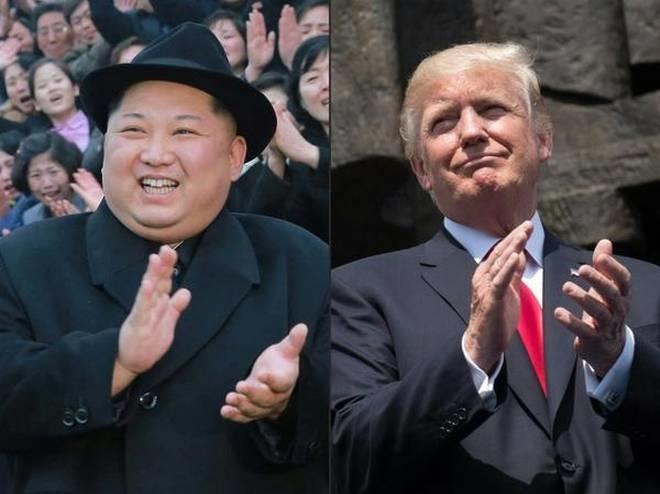
Image Courtesy: AFP
North Korea’s Ministry of Foreign Affairs announced on May 12 that the country’s only known nuclear test site, Punggye-ri, would be dismantled between May 23 and May 25 depending on the weather conditions. This follows the promise made by North Korean leader Kim Jong-un last month that the country would not be conducting any more nuclear tests and that it would dismantle the site.
North Korea’s state news agency KCNA reported that explosions would be used to collapse all the tunnels in the site, all entries would be blocked and “all the observation facilities, research institutes and structures of guard units on the ground” would be removed.
Journalists from China, Russia, the United States, the United Kingdom and South Korea will be invited to witness the dismantling process. The state announced that a charter flight would be provided for international journalists from Beijing to Wonsan. In order to allow broadcast, North Korea will also be “opening territorial air space”.
This move came three days after North Korea released three Americans detained in the country for “anti-DPRK hostilities”, at the suggestion of U.S. Secretary of State Mike Pompeo, who visited Jong-un in North Korea on May 9 for the second time in a month.
Welcoming this announcement, US President Donald Trump, who is scheduled to meet Jong-un in Singapore on June 12 to negotiate the denuclearization of Korea and normalization of the relationship between the two countries, tweeted: “North Korea has announced that they will dismantle Nuclear Test Site this month, ahead of the big Summit Meeting on June 12th.. Thank you, a very smart and gracious gesture!”
Anatomy of a test site
The Punggye-ri Nuclear Test Site, located under Mt. Mantap in the northeast of the country, has been the site of five of the six underground nuclear tests North Korea has conducted. The latest test in September last year, which was also the largest and saw a hydrogen bomb being exploded, triggered an earthquake of 4.1 magnitude after a cavity collapsed under the mountain, causing damage to the test-site, according to the findings of two Chinese seismological research groups.
However, unlike what Reuters and many other media outlets reported citing “Chinese academic reports”, the damage may not have been extensive enough render “the entire site unusable for future tests.” A report in 38 North noted that while the Chinese reports were accurate in pointing out that damage was done,”Nowhere in these findings were any comments made on the viability of the overall test site for future underground nuclear testing, or were any claims made that “the test site ‘collapsed’.”
While satellite imagery indicates that the north portal of the test-site has been abandoned after the damage caused by the earthquake, two of the other areas, approximately 2.5 and 3.5 kilometers from the peak of the mountain, remain accessible through the south and west portals. In the latter, significant activity was underway up until March as suggested by the presence of mining carts and personnel in the area. This indicates that the dismissal of North Korea’s decision to dismantle the infrastructure on the grounds that it was already rendered useless is not warranted.
Announcing the decision last month, Kim, while portraying the move as a friendly gesture by North Korea towards the US and South Korea, also said the site was not necessary anymore because the nuclear weapons had been already been developed and no further tests were necessary, indicating that it was a credible nuclear power.
However, according to Siegfried Hecker, a former director of the Los Alamos National Laboratory where the first nuclear weapons were developed, North Korea still requires more testing to bring the US mainland within the reach of its nuclear-tipped missiles. If his assessment is accurate, North Korea’s decision, which might end testing on technology that can target the US mainland, can be seen as a gesture to smoothen the peace process.
Japan plays spoil-sport
While both the US and South Korea welcomed the move, Japan struck a discordant note. Prime Minister Shinzo Abe said Japan would not resume normal ties with the country unless North Korea settles the row over the abduction of a dozen Japanese citizens between the 1970s and 1980s.
North Korea, which claims that the issue has already been resolved, “allowed five of the abductees, who were used to teach their language and culture to North Korean agents, to return to Japan with their families in 2002, but insists that eight others died and that the remaining four never entered the country,” Guardian reported.
Abe, however, has threatened that North Korea cannot become an accepted member of international community unless Japan concedes to the normalization of its relations with the country. “The key is for the North Korean leader to decide.. It is extremely important for North Korea to normalise diplomatic relations with Japan to walk along the right track as part of international society,” he said. He has also been lobbying both Trump and South Korean President Moon Jae-in to raise the issue of abducted Japanese citizens during negotiations.
In a sharply-worded critique, KCNA ran a commentary accusing Japan of indulging in “mean and foolish behavior to stem the trend of peace on the Korean peninsula at any cost although it is unanimously hailed by the international community.”
“When the nuclear issue of the Korean peninsula was under discussion 10 years ago, Japan touched on the "issue of abduction" in the framework of multilateral diplomacy which was arranged with much effort, only to cause complexity,” the commentary said.
No aid, only capital: US
North Korea, whose economy has been suffocated for decades by international sanctions imposed by the US, was promised by Mike Pompeo on May 11 that “If Chairman Kim chooses the right path, there is a future brimming with peace and prosperity for the North Korea people.. If North Korea takes bold action to quickly denuclearize, the United States is prepared to work with North Korea to achieve prosperity on par with our South Korean friends."
However, when the host of Face the Nation pointed out to Pompeo two days later that US National Security Advisor John Bolton had said that no economic aid was on offer to North Korea, Pompeo agreed, and pointed out that it was not American aid but American capital that was on offer.
“What Chairman Kim will get from America is our finest. Our entrepreneurs. Our risk takers. Our capital providers. Not our taxpayers. They’ll get people. … They will get private capital that comes in. North Korea is desperately in need of energy support - electricity for their people. They are in great need of agricultural equipment and technology. The finest from the Midwest that I come from. We can deliver that,” he said.
With Pompeo acknowledging that “we will have to provide security assurances to be sure” and indicating that the US agenda of regime change in North Korea might be dropped, it remains to be seen what Kim Jong-un’s response will be to the offer of American capital setting shop in the country.
Get the latest reports & analysis with people's perspective on Protests, movements & deep analytical videos, discussions of the current affairs in your Telegram app. Subscribe to NewsClick's Telegram channel & get Real-Time updates on stories, as they get published on our website.









